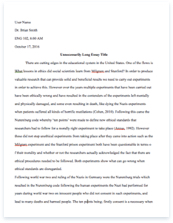Developing Yourself as an Effective Human Resource and Development Practitioner

- Pages: 4
- Word count: 782
- Category: Learning
A limited time offer! Get a custom sample essay written according to your requirements urgent 3h delivery guaranteed
Order NowThe CIPD has developed a map of the HR profession (HRPM) that describes the knowledge, skills and behaviours required by human resources (HR) and learning and development (L&D) professionals. This unit is designed to enable the learner to develop a sound understanding of the knowledge, skills and behaviour required of a professional practitioner, whether their role is generalist in nature or specialist, for example L&D. It will enable learners to develop a personal development plan, following a self-assessment of learning and development needs, that meets their personal and professional requirements.
This unit is suitable for persons who:
• are aspiring to, or embarking on, a career in HR/L&D
• are working in the field of HR/L&D in a support role and wish to develop their knowledge and skills • have responsibility for HR/L&D activities and decisions within an organisation without a specialist function • are employees or independent consultants within the field of HR/L&D • engage in CPD to enhance and maintain their professional practice and membership.
Learning outcomes
On completion of this unit, learners will:
1. Understand the knowledge, skills and behaviours required to be an effective HR or L&D practitioner. 2. Know how to deliver timely and effective HR services to meet users’ needs. 3. Be able to reflect on own practice and development needs and maintain a plan for personal development.
Unit content
Indicative content is provided for each of the learning outcomes of the unit. The content is neither prescriptive nor exhaustive but should enable achievement of the learning outcomes.
1. Understand the knowledge, skills and behaviours required to be an effective HR or L&D practitioner. Knowledge and understanding: overview of key knowledge requirements as identified in Band 1 and 2 of the CIPD’s HR Profession Map (HRPM). www.cipd.co.uk/hr-profession-map Abilities: overview of key abilities as identified in Band 1 and 2 of the HRPM. Professional behaviours: overview and examples of professional behaviours covered in behavioural clusters in the HRPM. Knowledge, skills and behaviours required to carry out role effectively: dependent upon own role, for example whether in a generalist HR role or in a specialist area such as L&D.
2. Know how to deliver timely and effective HR services to meet users’ needs. Definition of customer in HR-related customer service provision: for example employees, directors, line managers, potential employees; understanding of the customer service chain and offer; difference between end user and internal and external customers and the way in which the organisation’s structure, values, goals, products and service may impact upon the relationship. The importance of communication in customer service excellence: effective management of customer expectation, for example informing customers of exceptions to usual expectations such as delays; legislative impact; organisation processes and procedures; appropriate use of verbal and non-verbal communication; responding to the customer; adapting communication for different situations and individuals; ability to listen and interpret customers’ needs and expectations; handling and resolving customer service problems; valuing complaints as a means for delivering service improvement; effective systems and processes, which include: informal methods, formal methods, appeals and escalation if required.
3. Be able to reflect on own practice and development needs and maintain a plan for personal development. Definition of continuing professional development (CPD) and related concept: reflective practice; reflection ‘in’ and ‘on’ action; ‘thinking performer’ and ‘business leader’; learning cycle; personal development plans. Reasons for CPD: reasons why persons engage in CPD, for example: intrinsic motivation and commitment to lifelong learning; requirements of a professional role; requirement for membership of professional bodies; part of performance management/appraisal process; emphasis on CPD as an ongoing activity. HR Profession Map: coverage of the core behavioural clusters and their relevance for HR professionals. Self-appraisal: peer review; appraisal by line manager; an assessment of the link between the learners’ current knowledge and skills and those they may wish to develop to improve within their role and also to align more with the wider organisational objectives; the importance of role-modelling a commitment to CPD in the workplace; identification of preferred learning methods, for example ‘shadowing’, e-learning, observation and practice.
Nature and types of personal development plans (PDPs): stages of personal planning; beneficiaries of PDPs; types of learning activity for self-development; developing personal objectives based on specific, relevant, measurable (or assessable), achievable, realistic and time-bound activities; understanding the importance of reviewing PDPs and adapting according to need; importance of being able to reflect on learning and future action planning. Provide evidence of engagement with CPD: for example but not limited to: in-depth analysis of own career aspirations with action plan; CPD log; analysis of reflective process; analysis of one gap identified with action plan; demonstration of improved processes or implementation of HR strategy depth.










